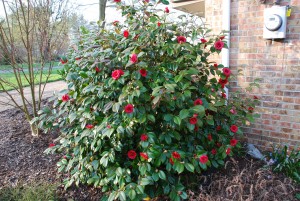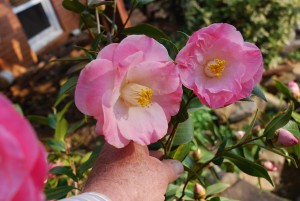If you live and garden in USDA hardiness zone 6, several camellia cultivars are winter hardy. The past decade has seen an increase in the list of hardy cultivars. These same cultivars are also reliable planted in zone 7. Here is a sampling of the best Zone 6 Hardy Camellias:
Fall Bloomers:
Londontowne Blush
Long Island Pink
Snow Flurry
Sweet October
Winter’s Interlude
Winter’s Joy
Winter’s Star
Spring Bloomers:
April Dawn
April Remembered
April Snow
April Tryst
Korean Fire
Pink Icicle
Spring’s Promise
Winter of 2013-14 was the roughest in my 9 years of growing camellias in northeast Tennessee (zone 6). All March-April bloomers lost their flower buds. All camellias in my garden survived the cold and looked great by summer.
Subjecting camellias to direct winter winds and planting them late in the year are two big mistakes. Don’t plantafter October 1st; spread 2-3 inches of an organic mulch around newly planted camellias as a soil heat blanket. October tends to be a dry month in the mid-South region; irrigate new camellias during rainfall deficit. Caveat: do not overwater camellias; November-December rainfall is usually plentiful. One-year old planted camellias acquire good drought tolerance. Irrigate only when summer months are exceptionally dry.
As a holiday promotion local big box stores may sell the camellia cultivar ‘Yuletide’ with bright red blooms and dark green leaves which open around late October. Most flowers will not open as frigid temperatures will arrive shortly. Open flowers are immediately injured and temperatures below 15º F will kill (blast) unopened floral buds. Yuletide may be zone 7b hardy.
Lastly, some zone 7 rated cultivars demonstrates exceptional plant cold hardiness. Their flowers (Sasanqua types) open in early autumn. Their winter foliage bronzes slightly, but shrubs rarely lose a leaf. More about these cultivars at a future blog



 Posted in
Posted in 
